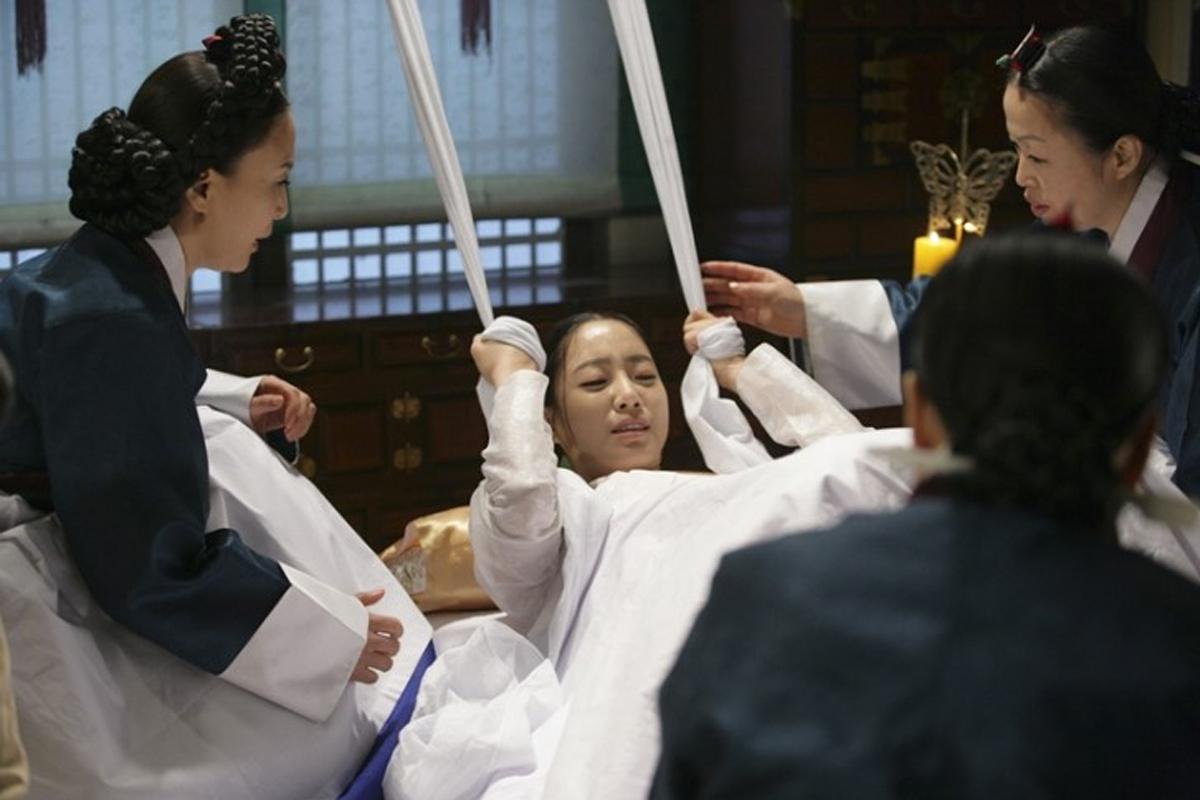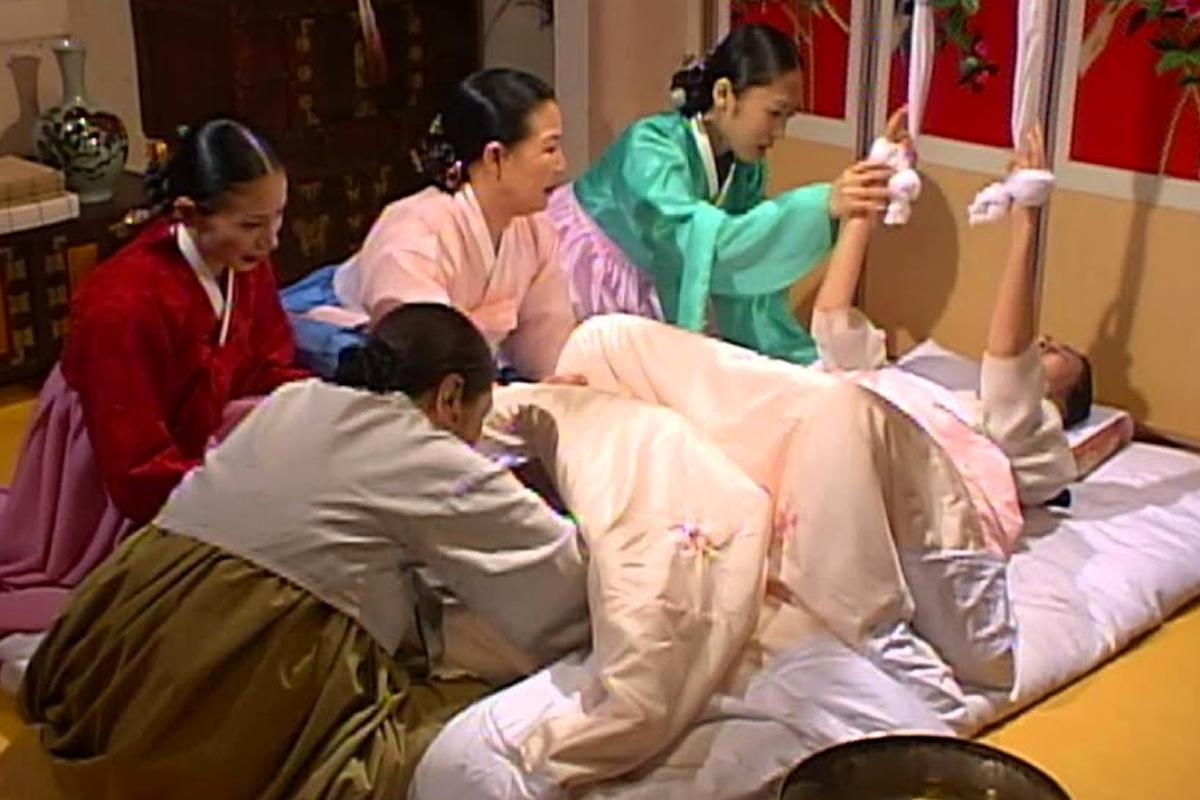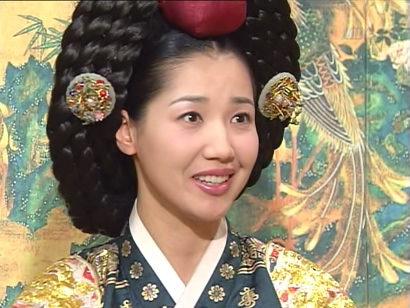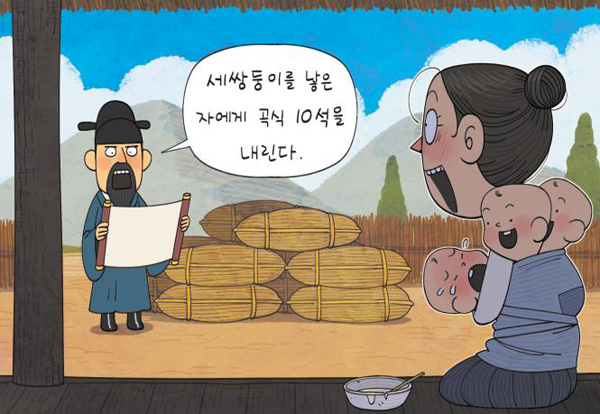According to Korean drama The King's Affection, it was believed that if the queen gives birth to a twin boy and girl, it was a bad omen and the prince would not be able to ascend to the throne. While watching this drama, did you wonder if ancient Koreans really held this belief?
Let's take a look at Korean history and the past views about twins.
Twins In Korean History
 Source: Insu, the Queen Mother (인수대비)
Source: Insu, the Queen Mother (인수대비)
There are several records of twins being born in Korean history, but the data at the time doesn't specify if it was during the Joseon or Goryeo Dynasties. Families with many children were viewed favorably as they were seen as helping to increase the national population.
For example, in 1642, during the reign of King Injo of the Joseon Dynasty, there is a record that a family in Suncheon, Jeolla-do, gave birth to three sons at once to assist with farm labor, and that this family lived together from 1654 to 1654 during the reign of King Hyojong of the Joseon Dynasty.
Families living in Cheonan-si, Chungcheongnam-do, and Samcheok, Gangwon-do, also received rice as a gift if they gave birth to triplets.
Since it is very difficult to have triplets, the state also gave child-rearing subsidies.
 Triplets Daehan, Minguk, Manse
Triplets Daehan, Minguk, Manse
The record of the most children born at once in Korea since ancient times (year 193) was during the Silla Dynasty, when a woman living in Gyeongju gave birth to four sons and one daughter. Birth of quadruplets was recorded three times during the Silla Dynasty and five times during the Joseon Dynasty. Birth of triplets was recorded 151 times in the Joseon Dynasty.
During the reign of King Munmu of the Silla Dynasty (661-681), a woman gave birth to three sons and a daughter and was given 200 bags of food, worth about 40 million won (approx. 33,700 USD) today. It was an amount women of that era couldn't earn in her lifetime.
More than 800 years later during the reign of King Sejong of the Joseon Dynasty (1418-1450), the typical annual harvest of rice and beans was only 10 bags, but nine years' worth of food was given to families who gave birth to triplets.
With institutionalization, records related to multi-child births became more detailed.

These records show that ancient Koreans didn't consider the birth of twins as a symbol of misfortune, like in the drama. Instead, gifts were given as rewards.
But why is there a record of just ordinary twins, and where did the records of royal twins go?
Why Are There No Twins In The Royal Family?
 Source: The King's Affection
Source: The King's Affection
On The King's Affection, it is said that the birth of twins is a bad omen because the two look alike, so when one of them becomes the king, it may confuse the public into thinking there are two kings, causing chaos and unrest in the country. Was this a real belief?
There is no official evidence supporting this belief, but based on the royal records, it's presumed that even if the queen actually gave birth to twins, it would not be recorded to avoid future generations doubting the justification of their ascent to the throne.
Whether or not there were no twins born in the Korean royal family depends on if you believe that no twins were really born or that their births just weren't recorded.
From royal family records, it was found that Queen Munjeong (문정왕후) and King Jungjong conceived twins, but unfortunately, it ended in a miscarriage.
 Queen Munjeong (Source: Dae Jang Geum)
Queen Munjeong (Source: Dae Jang Geum)
Therefore, the belief that twins are a bad omen is unlikely to be true. Twins have been mentioned many times in the records, but there is no record of having to kill one of them.
However, there is one record of this during the reign of King Gung Ye (궁예) during the Hugoguryeo Period: it is said that his daughter gave birth to twin sons, and the daughter and twins were killed.
Historical Records Of Twins

Although the state authorities repeatedly awarded women with multiple births, it seems that the birth of twins was always a source of confusion in Korean history.
In 1533, the 28th year of King Jungjong's reign, triplets were born in the family of Seo Seong-jong (서성정), a member of the royal family.
However, Joseon Dynasty records report that the children were born with a human body and a dog's head, which can't be true, so this has remained a mystery.
In addition, the records of multiple births from the early to late Joseon period share several characteristics.
 Source: The King's Affection
Source: The King's Affection
The first is that normally, records of triplets indicated three boys. What would it have been like if girl triplets were born during the patriarchal society of the time? Second, most of the records about twins are those born to regular civilians, and there are almost no records of twins born to high-ranking aristocrats.
According to records, it's believed that families reported a birth of twins because they couldn't take care of all of them and wanted to receive compensation. Even if aristocrats reported a multiple birth, they probably wouldn't have received anything, so they might have just chose not to report it.
In addition, the record says that the gifts given to families who gave birth to twins or more gradually decreased from ten bags of food to seven, five, then it was just reported that food was given without a specific amount written (곡식 하사).
This has been a post about how twins and multiple births were viewed in Korean history and how it's a little different from what was shown in The King's Affection. We hope you enjoyed it, see you next time!

